
Salvia glutinosa, the glutinous sage, sticky sage, Jupiter's sage, or Jupiter's distaff, is a herbaceous perennial plant belonging to the family Lamiaceae.

Salvia sprucei is a herbaceous perennial in the family Lamiaceae that is native to Ecuador, growing at 7,000 feet (2,100 m) elevation or higher in thick scrub on steep slopes. It was named in 1898 by botanist John Isaac Briquet for the British plant collector Richard Spruce. It is likely that Spruce discovered the plant on a collecting trip in Ecuador in 1857.

Salvia fruticosa, or Greek sage, is a perennial herb or sub-shrub native to the eastern Mediterranean, including Southern Italy, the Canary Islands and North Africa. It is especially abundant in Palestine, Israel and Lebanon.
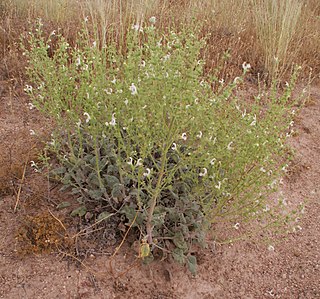
Salvia candidissima, the blazing white sage, is a herbaceous perennial native throughout western Greece, and parts of Turkey, Iraq, and Iran, generally between 2000 and 6500 feet elevation.
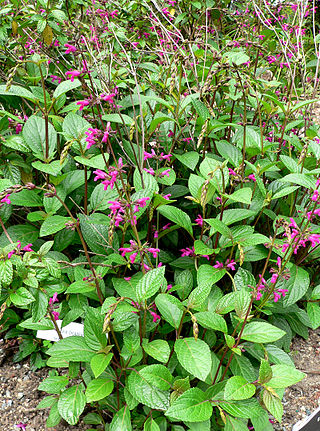
Salvia chiapensis is a herbaceous perennial native to the province of Chiapas, Mexico, growing between 7000 and 9500 feet elevation in cloud forests. It was introduced to horticulture in the 1980s, probably as a result of a collecting trip by the University of California Botanical Garden, Berkeley.

Salvia confertiflora, the Sabra spike sage, is a species of flowering plant in the family Lamiaceae, native to Brazil. This herbaceous perennial reaches 1–1.5 m (3.3–4.9 ft) in height, and 10–50 cm (3.9–19.7 in) spread in one season, becoming shrubby at the base with age.

Salvia fulgens, the Cardinal sage or Mexican scarlet sage, is a species of flowering plant native to the Mexican mountains adjacent to the state of Puebla, growing at 8,700-11,000 ft elevation. It prefers the edge of oak and coniferous woodlands, especially in clearings of Abies religiosa. The mountains receive fog and rain nearly year-round.

Salvia lanigera is a small herbaceous perennial that is native from northern Egypt and Arabia, to the south of Turkey and Iran. It grows in low altitude deserts, in sandy loam and chalky sandstone soils. The specific epithet "lanigera" means "wool-bearing" or "fleecy", referring to the hairs that cover all parts of the plant. It was first described in 1817 by Jean Louis Marie Poiret, a French clergyman sent by Louis XVI to Algeria to study the native plants. Following the French Revolution, Poiret became a professor at the Grandes écoles in Aisne.
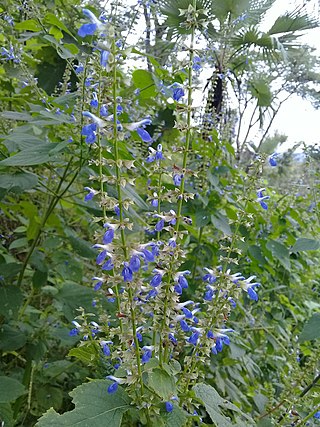
Salvia longispicata is a perennial shrub native to southwestern Mexico, growing between 1,000 and 6,500 feet elevation. The specific epithet "longispicata" gives the impression that the plant has "long spikes", but instead refers to the many projecting clusters of short flowering spikes that resemble small ears of corn.

Salvia oppositiflora is a perennial native to Peru, growing at high elevations—7,000 to 12,000 feet. It was collected in 1798 by Hipólito Ruiz López and José Antonio Pavón Jiménez and later described in Flora of Peru.
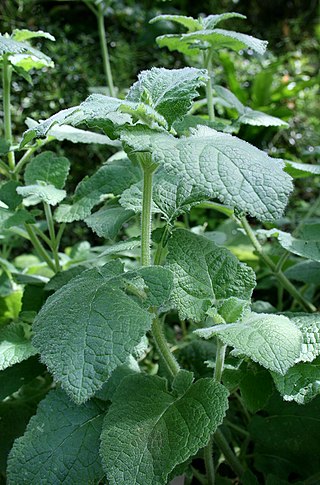
Salvia przewalskii is a herbaceous perennial plant native to the Chinese provinces of Gansu, Hubei, Sichuan, Xizang, and Yunnan, typically growing along stream banks, forest edges, among shrubs, and on granitic hillsides. It was described and named in 1881 by the Russian botanist Carl Maximowicz after the Russian explorer and botanist Nikolai Przhevalsky, who made several collecting trips to China in the 19th century. The plant is widely known throughout its native habitat for its medicinal properties.
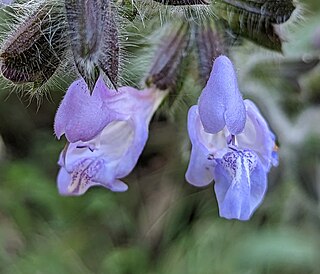
Salvia recognita is a woody-based perennial that is endemic to central Turkey, typically growing in light shade at the base of cliffs, at elevations of less than 4,000 feet (1,200 m). This species has been reported to contain salvinorin A. However, this report has not been replicated, and a previous study of 441 Salvia species from many regions found salvinorin A only in Salvia divinorum, from Mexico.
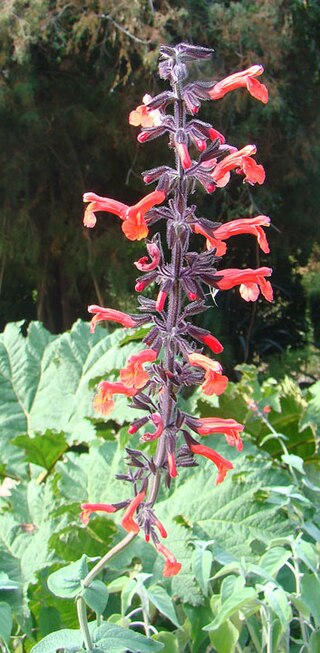
Salvia rubescens is a herbaceous perennial flowering plant native to the state of Mérida in Venezuela. The University of California Botanical Garden had been growing it since 1993 from a plant collected that year in Venezuela, only identifying it as S. rubescens in 2001.
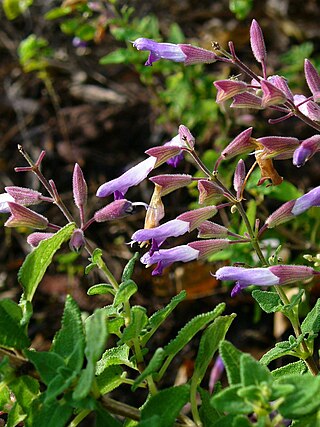
Salvia semiatrata is a species of perennial plant native to the Sierra Madre del Sur in the Mexican state of Oaxaca, growing at elevations of 6,500 ft (2,000 m) or higher. It prefers the edges of pine forests, and is also found on limestone cliffs and banks and in cactus scrub habitats that are dry and exposed.
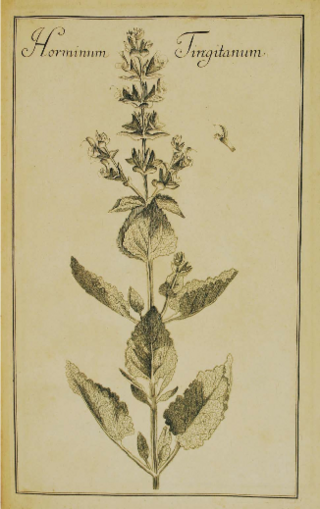
Salvia tingitana is an herbaceous perennial in the family Lamiaceae. It has a long and enigmatic history—it has been grown and described since the 17th century without any certainty about its origin. Botanists' speculation that it was native to northern Africa is reflected in the specific epithet tingitana, which refers to the town of "Tingi", even though no native plants have ever been found there. It was not until 1989 that a wild population of the plant was discovered, in western Saudi Arabia. The plant is regarded as a rather strong mosquito repellent commonly used in traditional medicine of Behbahan where it blooms around March.

Salvia taraxacifolia is a species of flowering plant in the Lamiaceae family. It is referred to by the common name Dandelion leaved sage and is a herbaceous perennial shrub that is endemic to southwest Morocco, growing in the Atlas Mountains at elevations ranging from 2,000 feet (610 m) to 8,000 feet (2,400 m). Very adaptable, it grows on limestone slopes, forest clearings, and rocky riversides. It has no close allies in the genus Salvia. The specific epithet, taraxacifolia, is likely Persian in origin and means 'leaves shaped like a dandelion'.

Salvia thymoides is an evergreen perennial shrub native to a small region in Mexico on the border of Oaxaca and Puebla states, growing at elevations from 7,000 feet (2,100 m) to 9,000 feet (2,700 m). Its native habitat is cloud forest, with the mountains catching regular moisture in the form of fog and rain. The plant was named by the botanist George Bentham in 1833, with the specific epithet, thymoides, referring to the small leaves which resemble those of thyme. It has a limited use in horticulture, introduced in the 1980s.

Salvia tubiflora is a perennial native to a small area of western Peru and northern Chile near the tropic of Capricorn, growing at elevations from 800 feet (240 m) to 1,600 feet (490 m).
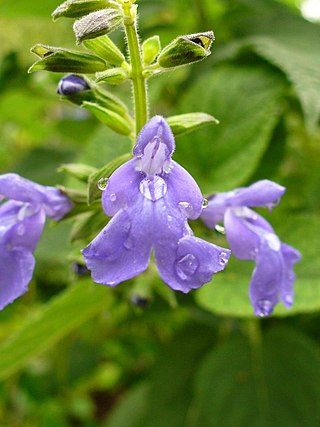
Salvia urica is a herbaceous perennial native to the mountains of Guatemala, Honduras, Belize, and Chiapas, Mexico. It is reportedly most common in Guatemala, where it grows in a wide variety of habitats from 1,000 to 8,000 feet elevation, in a mild and moist climate. The specific epithet, urica, means "caterpillar" or "cankerworm", possibly describing the tight whorls of flowers, calyces, and bracts before they open.

Salvia villosa is a herbaceous perennial that is native to the Mexican states of San Luis Potosi and Coahuila, growing at approximately 4,000 feet (1,200 m) elevation in dry areas that have little or no frost.




















